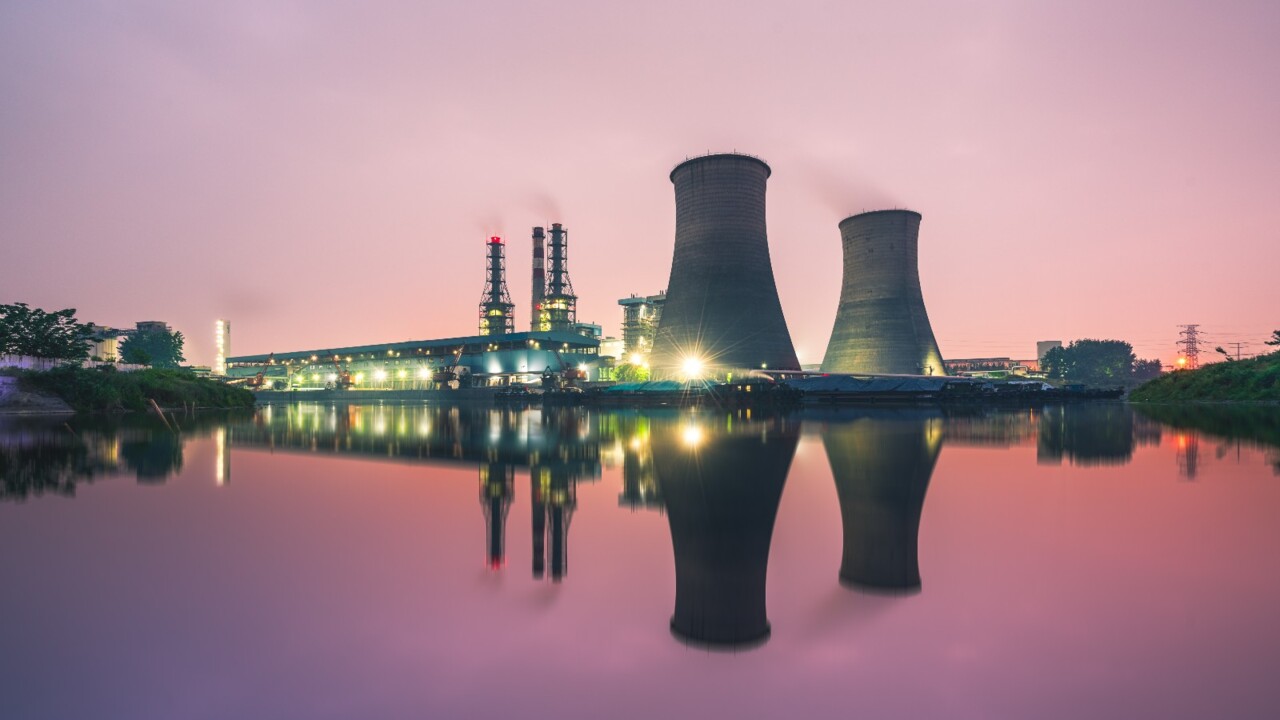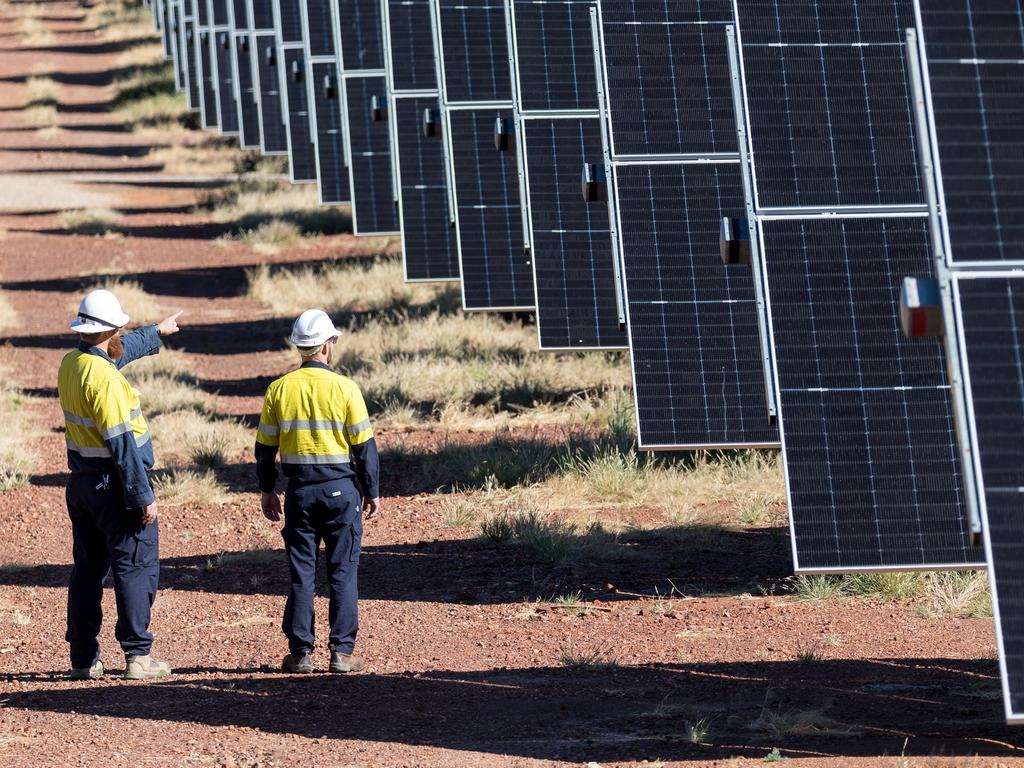Lights out: green power falling short, says AEMO
There are new warnings not enough green electricity will be built before coal exits the grid completely by 2038, as the Australian Energy Market Operator releases its net-zero-by-2050 road map.

Australia faces power blackouts unless regional communities back the acceleration of renewable energy and construction of 10,000km of transmission lines, with authorities raising the alarm that not enough green electricity will be built before coal exits the grid by 2038.
The Australian Energy Market Operator’s 25-year road map to shift the National Electricity Market to net-zero emissions was released as the Albanese government approved its second gas extraction project, giving the green light to 151 coal seam gas wells in Queensland under the $1bn Senex Energy Atlas project.
As Labor on Tuesday rebuffed warnings of a gas shortage in Victoria by the end of winter, Environment Minister Tanya Plibersek said the new coal seam gas project – owned by Gina Rinehart’s Hancock Prospecting and South Korean steel giant Posco – would primarily contribute to domestic gas supplies for households and manufacturing.
Resources Minister Madeleine King conceded gas prices could increase but wouldn’t exceed the government’s cap, nor would they “go up into the stratospheric kind of pricing” from two years ago.
Anthony Albanese also vowed the union movement would launch a “very strong” campaign against the Coalition’s nuclear plan, despite the Australian Workers Union pushing for politicians to be open to nuclear being part of the long-term energy mix if it became economically competitive.
“I’ll give you the big tip here – the union movement campaign will be very strong against your nuclear power plan,” the Prime Minister said in parliament.
“Because what they know is that your plan will destroy jobs. Your plan will lead to higher power prices. Your plan will undermine manufacturing in this country. Because you do not have a plan for anything in between now and the 2040s.
“You pretended that coal was the future for 10 years … while you did nothing. While power stations closed and energy supply went backwards. You refused to support alternative plans. You spoke about a gas-led recovery and then nothing happened. You now say you’re going to have a nuclear recovery.”

AEMO’s latest biennial transition road map shows the difficulty the nation will have once coal leaves the energy system, as debate rages over both the viability of nuclear power and rural Australia’s appetite to host large-scale renewable projects and high-voltage transmission lines.
The report makes little mention of nuclear, with AEMO insisting it cannot include the Coalition’s preferred policy into its thinking as it is illegal under federal law.
In its final 2024 Integrated System Plan, AEMO expects the majority of all coal-power generators to have nearly exited the system by 2035 and the remaining few would have been mothballed by 2038, which the market operator said required urgent delivery of replacements.
To compensate and to deliver Australia’s pledged 2050 net-zero-emissions policy, AEMO said about 6GW of new capacity must be added every year, about twice the amount of capacity currently being installed.
Wind would dominate installations through to 2030, complementing rooftop solar, and by 2050 grid-scale solar would contribute 58GW and wind 69GW.
The plan would cost $122bn to 2050.
“With coal retiring, renewable energy connected with transmission and distribution, firmed with storage and backed up by gas-powered generation is the lowest-cost way to supply electricity to homes and businesses as Australia transitions to a net zero economy,” the report states. “While significant progress is being made, AEMO is acutely aware of challenges and risks already being experienced and that may grow in the future. Risks to the reliability of the system are already becoming visible, and the NEM must be resilient to shocks such as unanticipated coal closures or outages, intense weather events or, conceivably, cyber attacks.”
AEMO chief executive Daniel Westerman said Australia was adding substantial amounts of renewable energy capacity but rapid progress was needed.

“There is a real risk that replacement generation, storage and transmission may not be available in time when coal plants retire, and this risk must be avoided,” Mr Westerman said. “This ISP is a clear call to investors, industry and governments for the urgent delivery of generation, storage and transmission to ensure Australian consumers continue to have access to reliable electricity at the lowest cost.”
As Coalition members used every opportunity in question time to probe the government on nuclear, Peter Dutton declared Labor was more likely to extend the lives of coal-fired power stations than the Coalition because it was backing the unproven technology of green hydrogen rather than a proven technology in nuclear.
The Opposition Leader said the Coalition had been thorough in developing its nuclear policy, which was created “for the right reasons – to reduce emissions, to secure reliable energy and deliver lower costs to the consumer”.
Mr Westerman declined to comment on the Coalition’s energy policy, but noted a substantial increase in forecast electricity demand by 2050. Demand is expected to surge as households and businesses electrify.

If Australia is unable to build enough new forms of electricity generation to replace coal, it will either have to extend the use of fossil fuel or the risk of blackouts and price increases will grow.
Australia would need to develop 10,000km of high-voltage transmission lines by 2050, with 10 projects covering 2500km underway. AEMO said a further seven projects had advanced substantially since its draft plan in December 2023.
Under AEMO’s “step change” or most likely, scenario, gas-powered generation would increase from 11.5GW now to 15GW in 2050, while electricity consumption would nearly double from 174TWh to 313TWh. Distributed solar, including rooftop, would increase fourfold from 21GW to 86GW and grid-scale wind and solar would increase six-fold from 21GW to 127GW. Storage capacity, such as batteries and pumped hydro, would jump from 3GW now to 49GW in 2050.







To join the conversation, please log in. Don't have an account? Register
Join the conversation, you are commenting as Logout